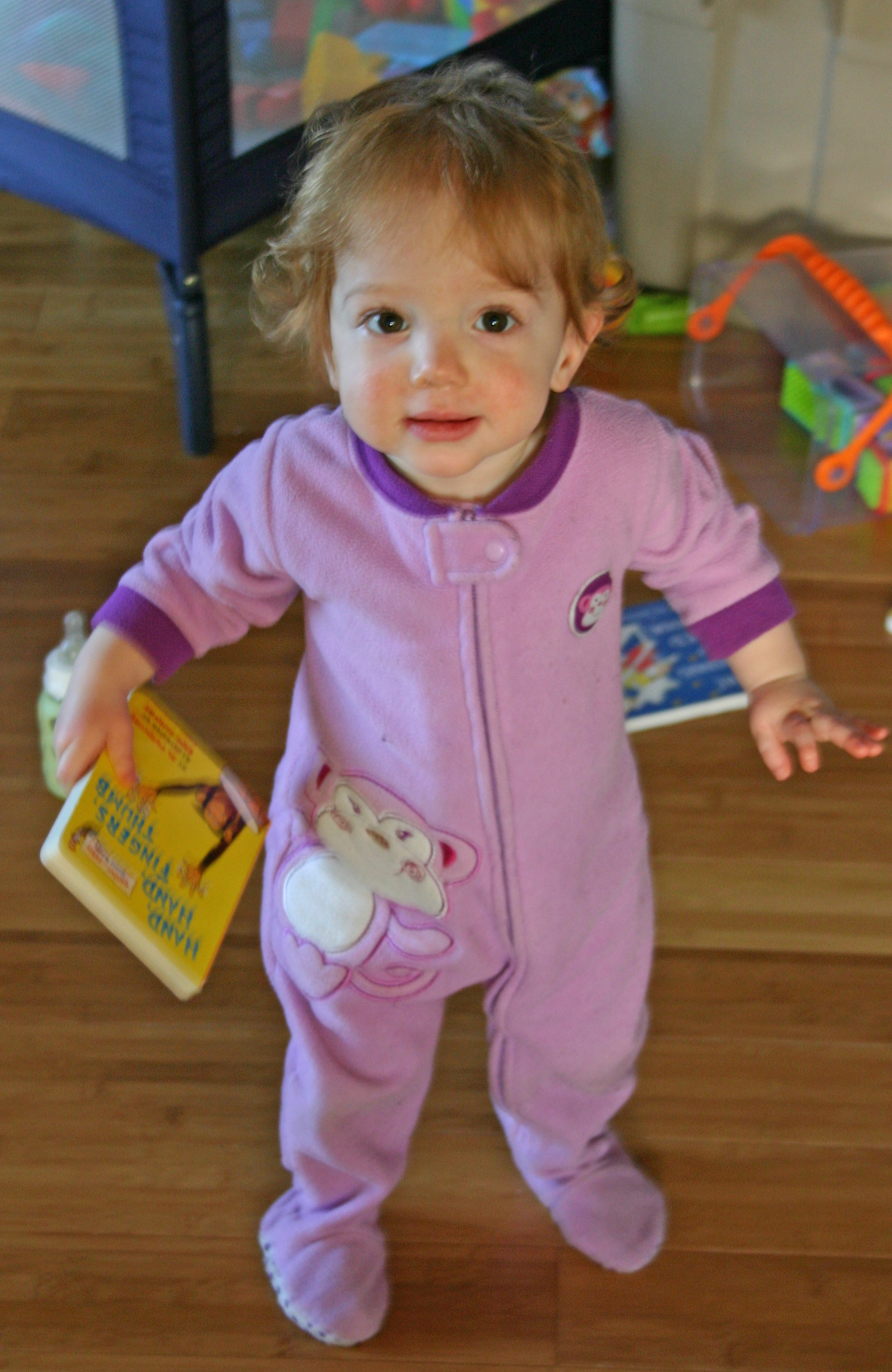The jaws from our latest whale arrived during the last week of February. Its baleen plates arrived months earlier and were kept frozen. The rest of the Humpback is being cleaned and prepared for shipment in the next few months. Why is this a big deal? The RBCM has some isolated pelvic bones of a Humpback, as well as some foetal specimens in alcohol, but this is our first Humpback skeleton, and the first whale in many years.
This humpback (about 2 years old) died at sea and floated towards a salmon farm in the Tofino area. It was offered to us March 28, 2013 (while I was on parental leave). Kelly Sendall (Collections) and Mark Dickson (Exhibit Arts) picked their favourite employees to assist cleaning of the carcass – kind of glad I missed all that flensing fun. My wife comments when I come home stinking of 50 year-old fish oil, but partly decayed whales may elicit a new level of response. If I arrived home basted in putrid whale oil, I may be directed towards a disposable tent nestled between our compost bins. At least it would be warm and sheltered in that part of our yard.
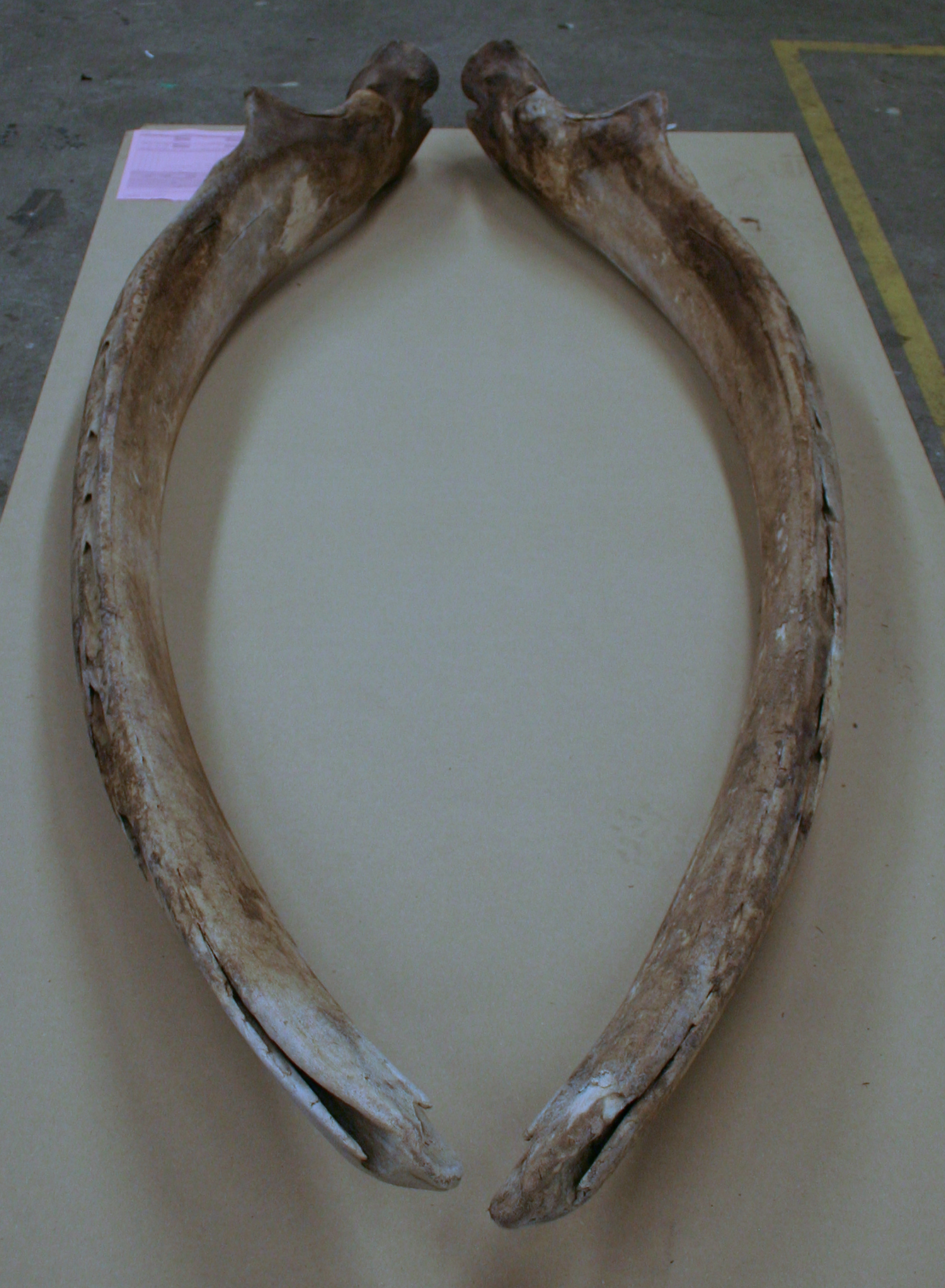
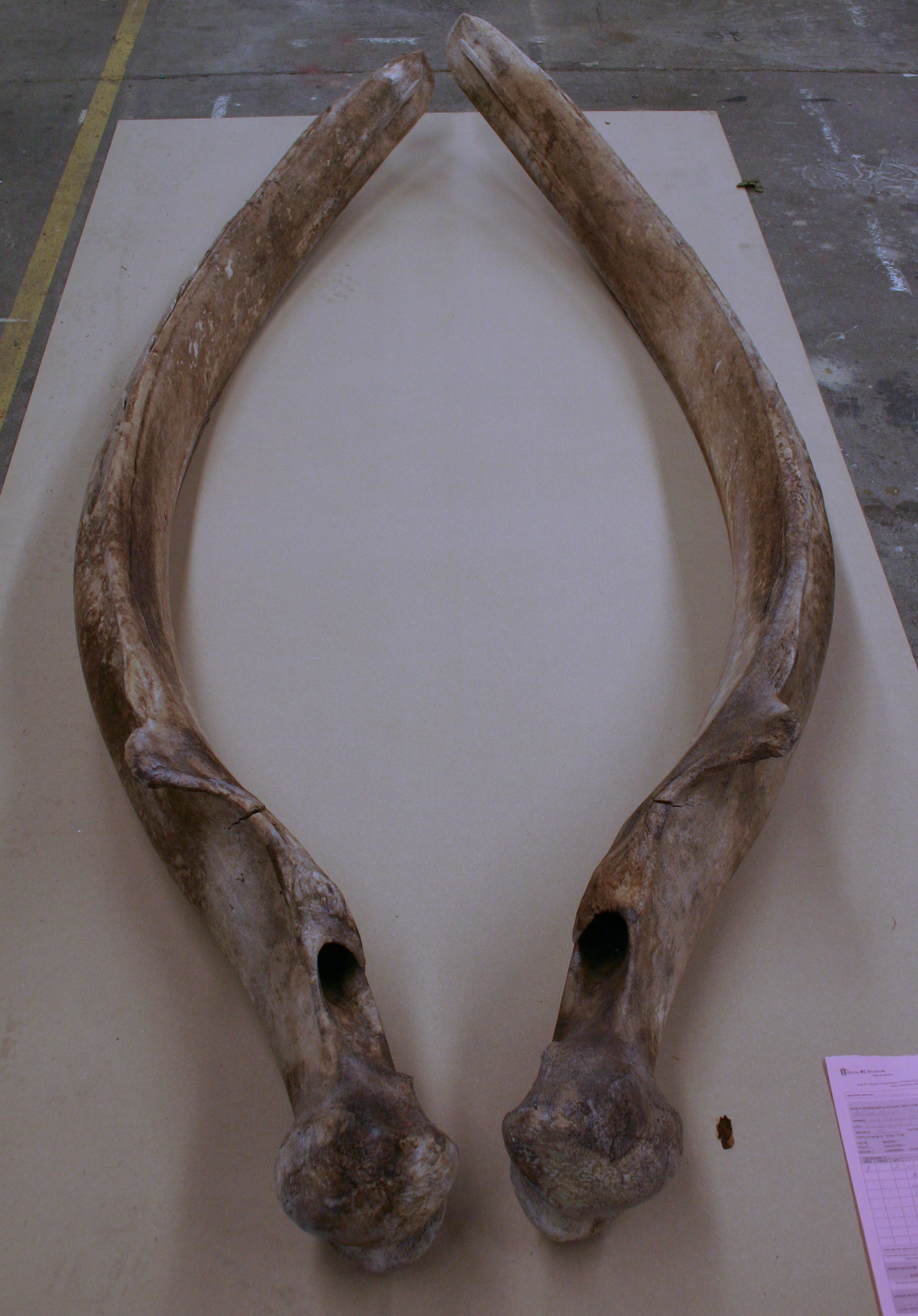 The partly cleaned bones of the Humpback Whale were covered in compost and left to age over the winter – bacteria and fungi do the stinky work. Bones are checked to be sure they are not being destroyed in the process. Fungal hyphae can weaken bones and if too much protein is removed, bones can crack and turn to dust in museum collections. Luckily, whale oil helps keep bones from completely drying out. Once the rest of the bones are ready, they will be shipped from Saltspring Island.
The partly cleaned bones of the Humpback Whale were covered in compost and left to age over the winter – bacteria and fungi do the stinky work. Bones are checked to be sure they are not being destroyed in the process. Fungal hyphae can weaken bones and if too much protein is removed, bones can crack and turn to dust in museum collections. Luckily, whale oil helps keep bones from completely drying out. Once the rest of the bones are ready, they will be shipped from Saltspring Island.
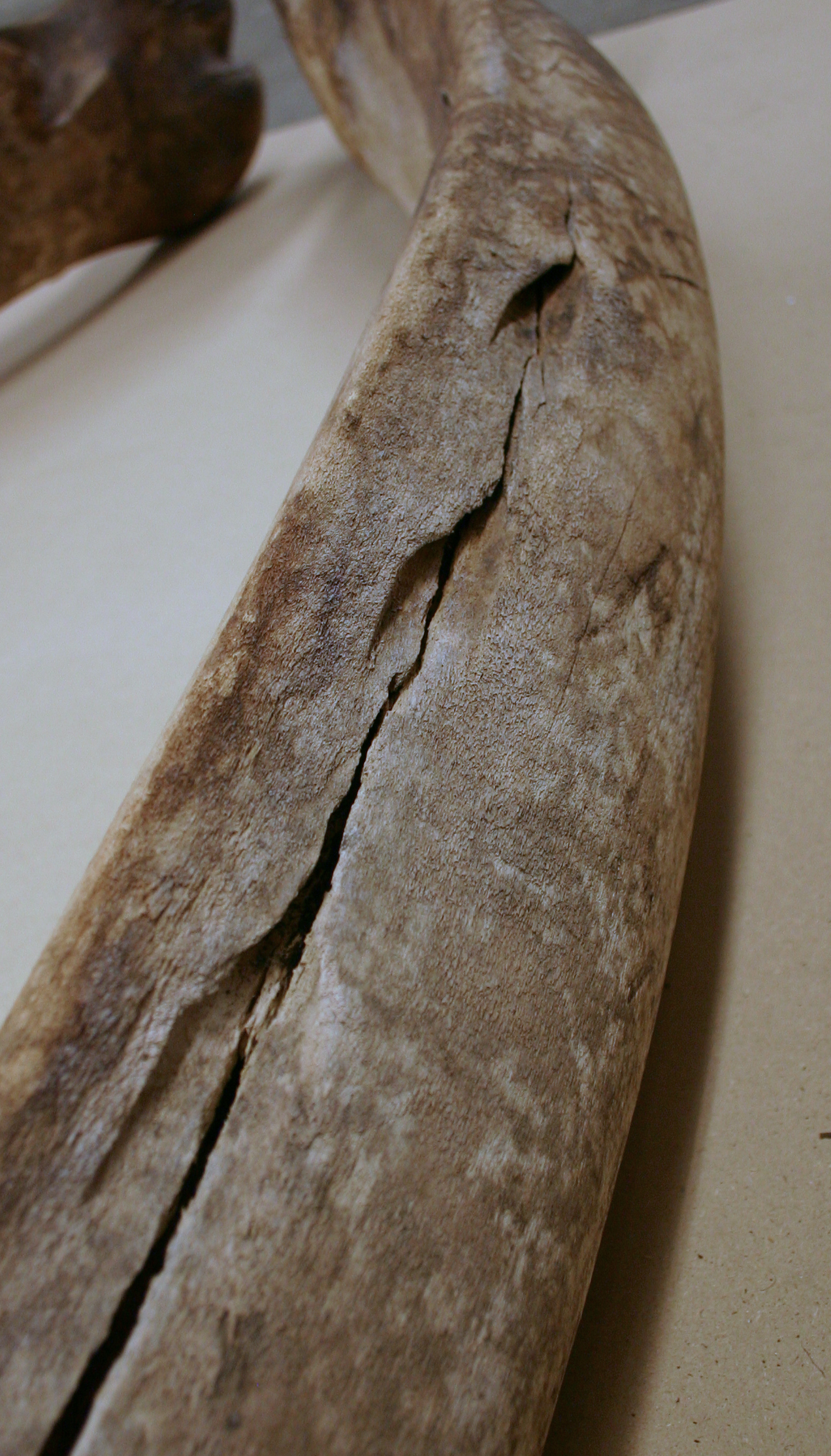
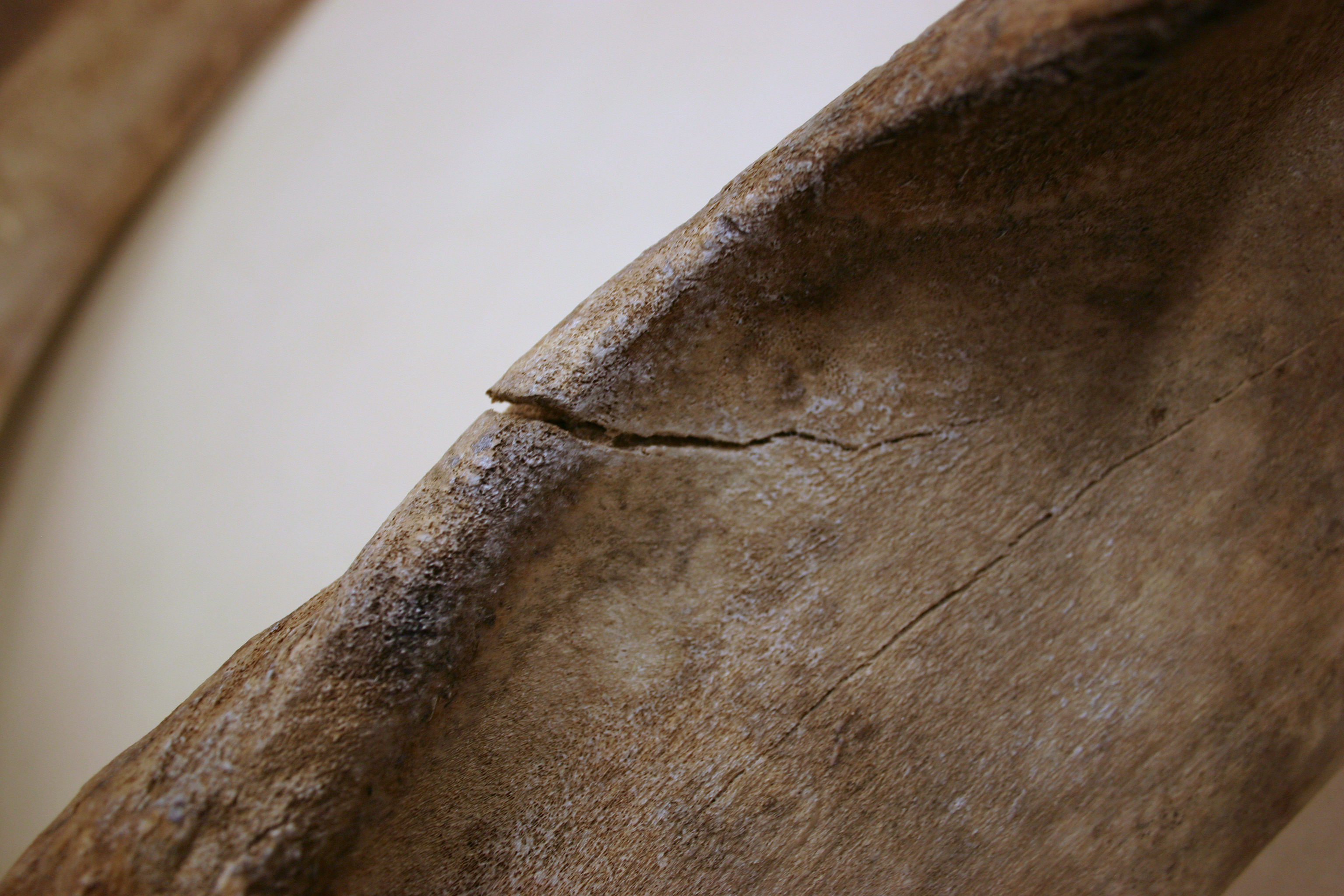 Keep your eyes on this blog – I’ll add new stories as the remaining remains reach the RBCM. For now we only have these edentulous dentary bones and the frozen baleen (my iphone is there for scale in the top photo). The baleen had been removed early to let the pieces dry, and we are going to build a frame to store the baleen to prevent each plate from becoming too curled. In life, baleen hangs from the roof of the mouth in two diverging brush-like series. The toothless lower jaws engulf a huge prey-filled volume of water. The jaws close, and the water is squeezed out. Crustaceans, Sandlance, Herring and other small prey items are trapped by the baleen.
Keep your eyes on this blog – I’ll add new stories as the remaining remains reach the RBCM. For now we only have these edentulous dentary bones and the frozen baleen (my iphone is there for scale in the top photo). The baleen had been removed early to let the pieces dry, and we are going to build a frame to store the baleen to prevent each plate from becoming too curled. In life, baleen hangs from the roof of the mouth in two diverging brush-like series. The toothless lower jaws engulf a huge prey-filled volume of water. The jaws close, and the water is squeezed out. Crustaceans, Sandlance, Herring and other small prey items are trapped by the baleen.
The animation of Humpback feeding in that clip from Finding Nemo was reasonable but perhaps a bit slow – but at least Humpback Whales are sympatric with Paracanthurus hepatus and Amphiprion percula . However, the idea of both fishes speaking English is a bit of a stretch. If I remember correctly, the Humpback Whale is the only vertebrate in that movie that doesn’t speak English – even octopus, krill and crabs are quite chatty. I guess I can let fishy vocalisations slip given other ichthyological inaccuracies – i.e., Mr. Ray is anatomically female.
Won’t be long and I will be watching Finding Nemo with my daughter (gratuitous cute baby photo below), and she’ll want to come to the museum to see the whale that ate Nemo and Dory. Thanks to all the work being done behind the scenes, this new Humpback Whale will be housed in the research collection, along with many other specimens. Our Behind the Scenes tours and Kids Programs are great ways to see some of the museum collections and guide young minds towards a life-long interest in nature. The museum Summer Camps are even better – kids get outdoors and see nature in person. Anna will love it.




